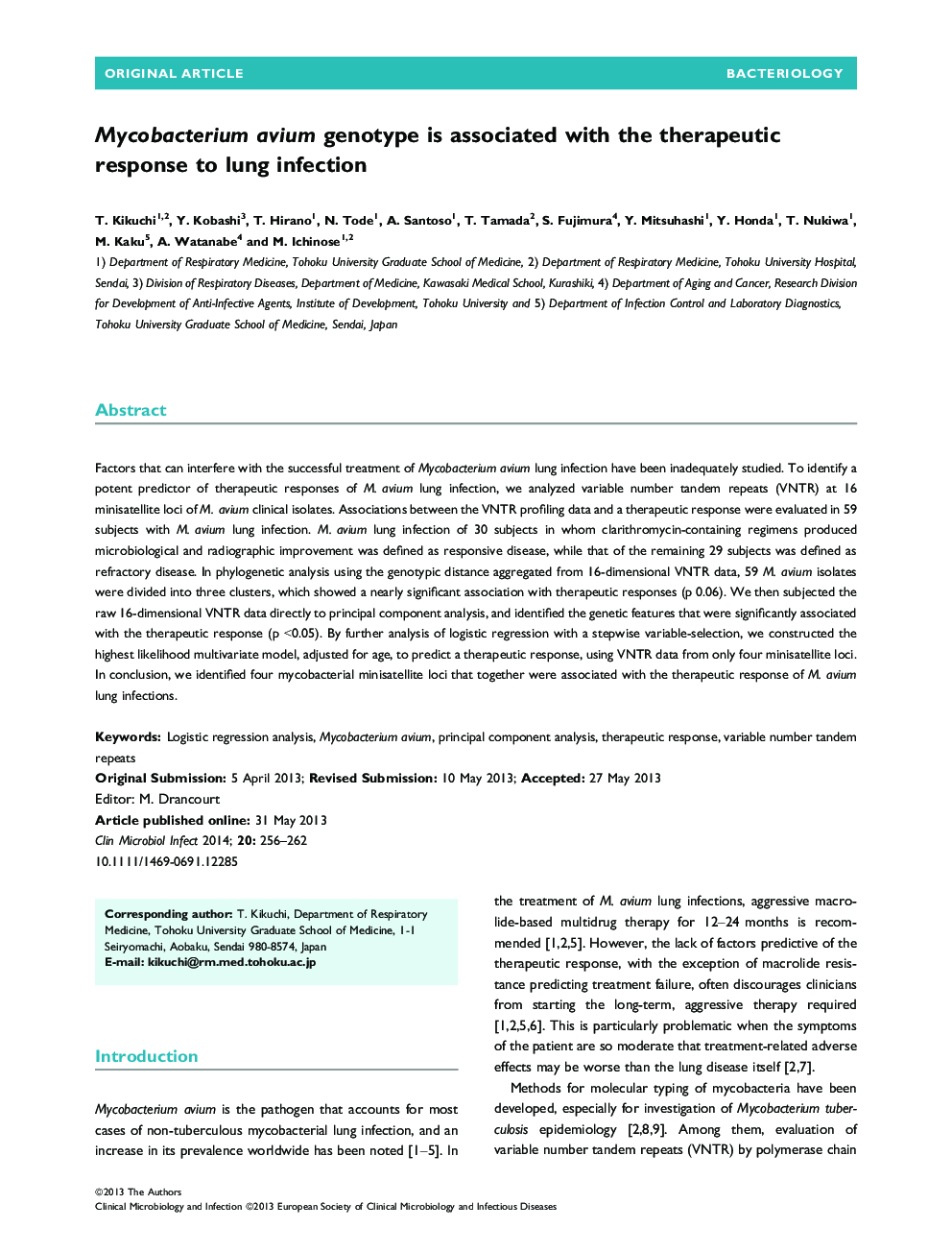| Article ID | Journal | Published Year | Pages | File Type |
|---|---|---|---|---|
| 6130478 | Clinical Microbiology and Infection | 2014 | 7 Pages |
Abstract
Factors that can interfere with the successful treatment of Mycobacterium avium lung infection have been inadequately studied. To identify a potent predictor of therapeutic responses of M. avium lung infection, we analyzed variable number tandem repeats (VNTR) at 16 minisatellite loci of M. avium clinical isolates. Associations between the VNTR profiling data and a therapeutic response were evaluated in 59 subjects with M. avium lung infection. M. avium lung infection of 30 subjects in whom clarithromycin-containing regimens produced microbiological and radiographic improvement was defined as responsive disease, while that of the remaining 29 subjects was defined as refractory disease. In phylogenetic analysis using the genotypic distance aggregated from 16-dimensional VNTR data, 59 M. avium isolates were divided into three clusters, which showed a nearly significant association with therapeutic responses (p 0.06). We then subjected the raw 16-dimensional VNTR data directly to principal component analysis, and identified the genetic features that were significantly associated with the therapeutic response (p <0.05). By further analysis of logistic regression with a stepwise variable-selection, we constructed the highest likelihood multivariate model, adjusted for age, to predict a therapeutic response, using VNTR data from only four minisatellite loci. In conclusion, we identified four mycobacterial minisatellite loci that together were associated with the therapeutic response of M. avium lung infections.
Keywords
Related Topics
Life Sciences
Immunology and Microbiology
Microbiology
Authors
T. Kikuchi, Y. Kobashi, T. Hirano, N. Tode, A. Santoso, T. Tamada, S. Fujimura, Y. Mitsuhashi, Y. Honda, T. Nukiwa, M. Kaku, A. Watanabe, M. Ichinose,
